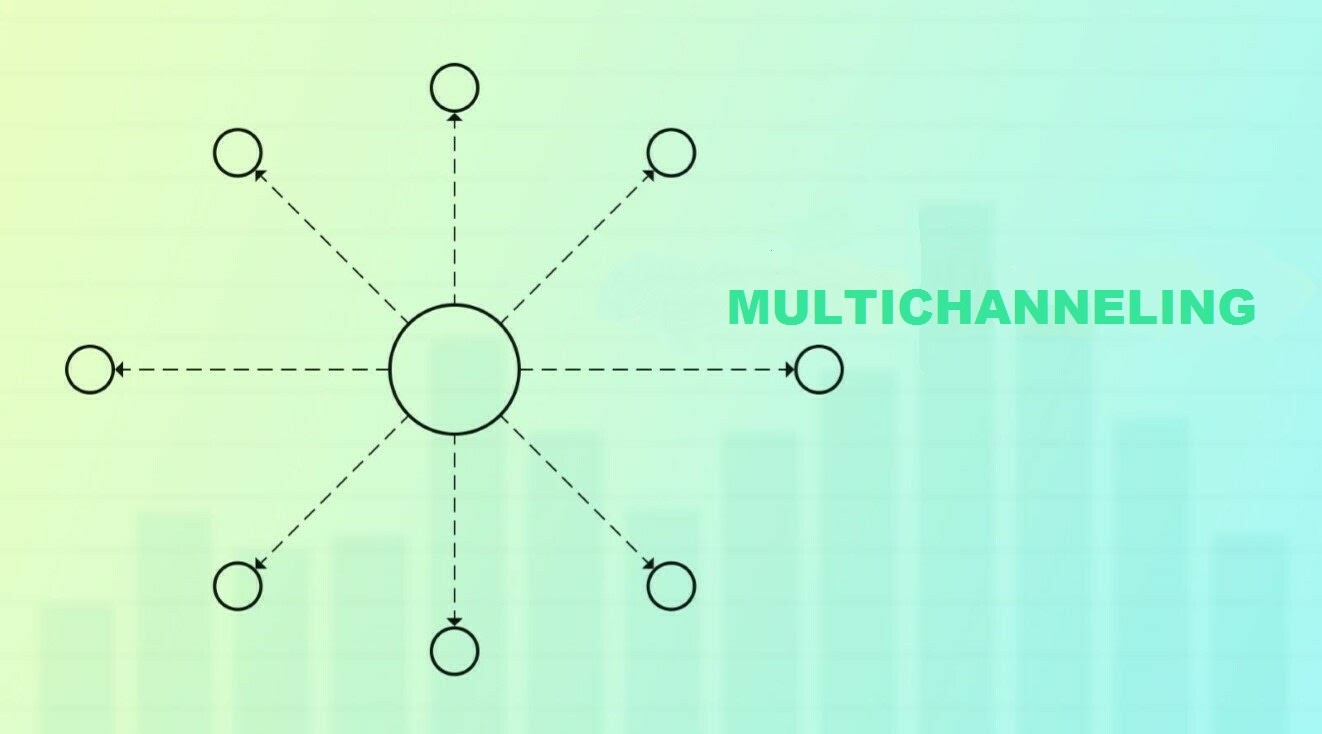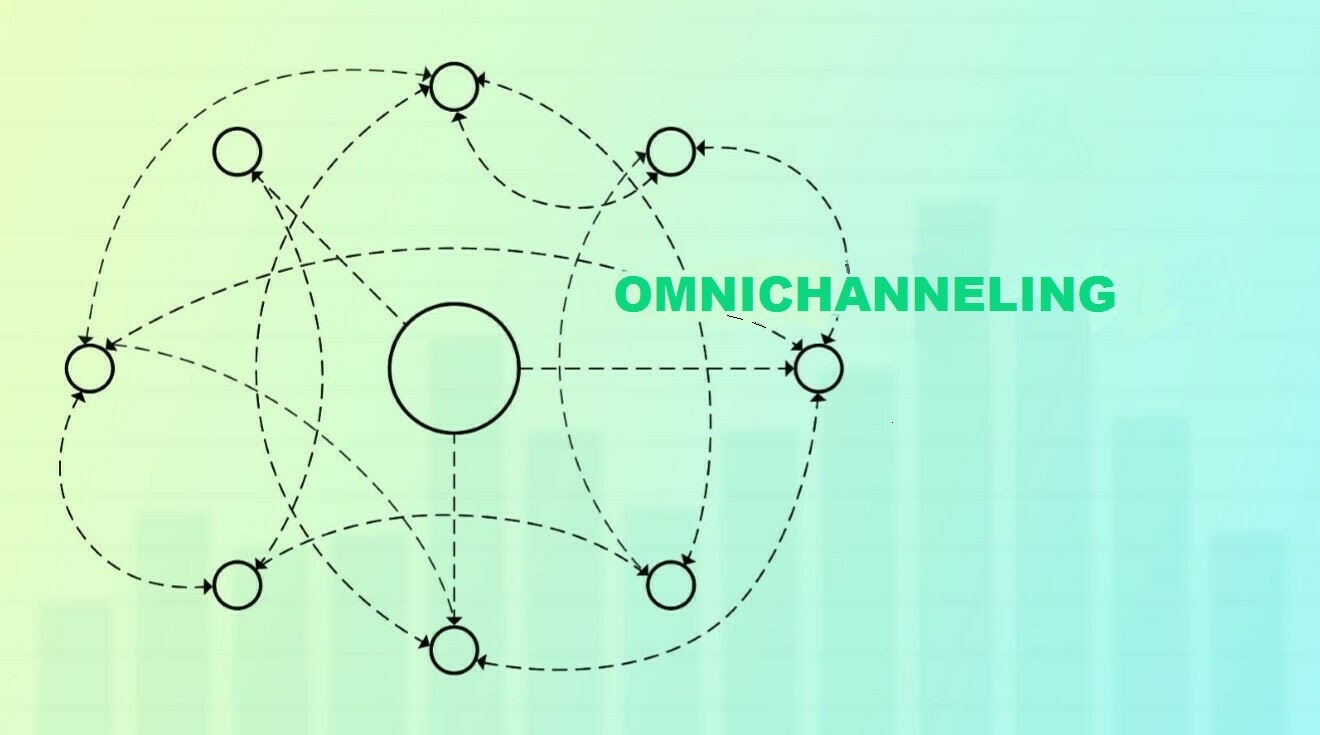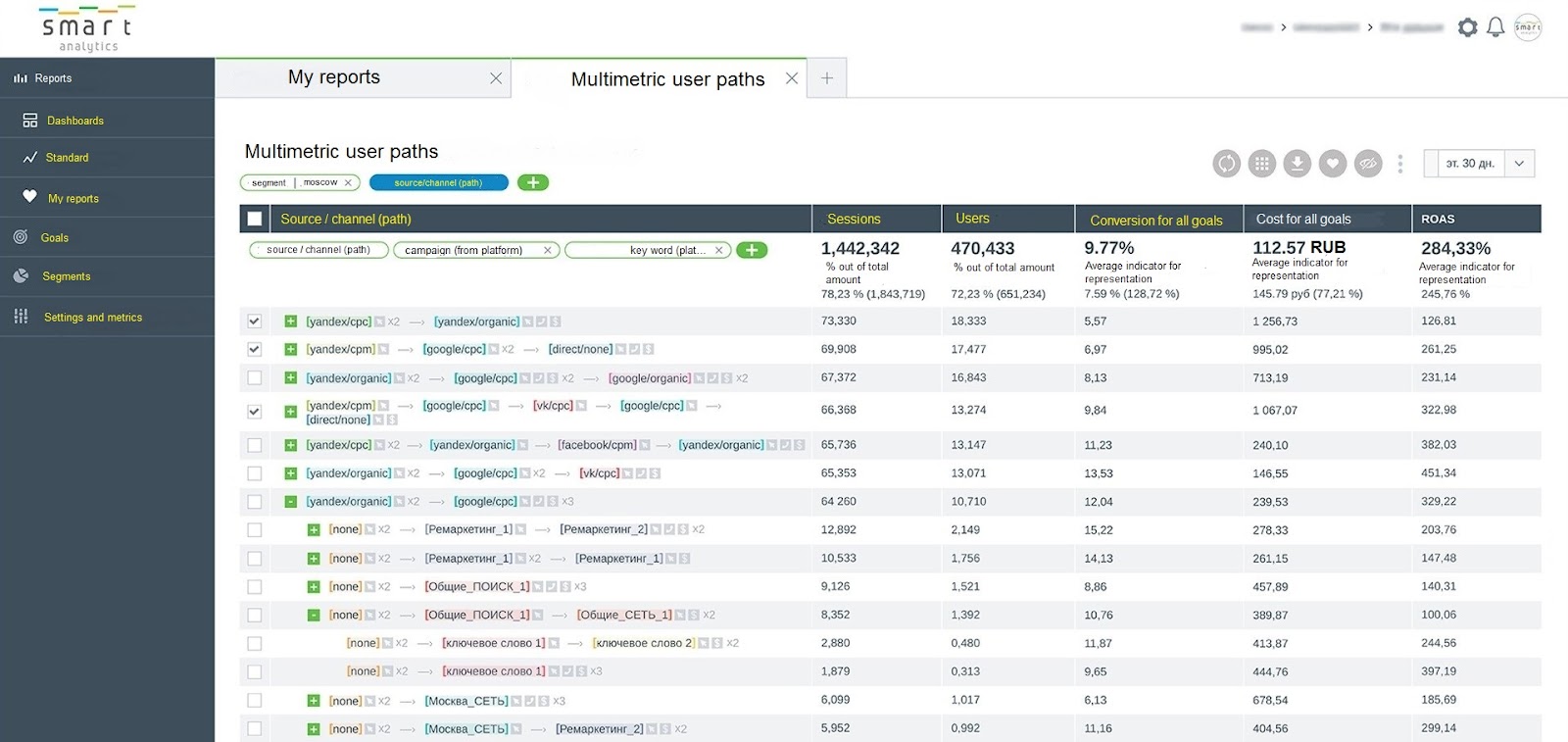In this article, Igor Kuzin, Head of the Educational Program "End-to-end analytics in marketing" at HSE University, Smart Analytics CEO, shared his opinion on user-centric analytics. We’ll discuss a well-established session-based approach and take a deep dive into its alternatives.
First of all, let's look at the classification of approaches in analytics by the level of data aggregation. There are four types of approaches:
1. Event-based - analytics based on "events". I say "events" for a reason. The fact is that the "occurrence" in practice is often understood as a specific entity in Google Analytics. In fact, events in GA are both hits, and the occurrences themselves, i.e., the rows in the database of the analytical system. Usually, one event equals one line (i.e., three page views and one button click equal to four lines in the database; further, we'll be using "occurrence" as a synonym for an event).
2. Session-based - analytics that is based on sessions. A session (aka "visit" and "hit") is a group of events united as per more or less generally accepted logic. The main logic is to group events with less than 30 minutes between each of them and the same visit source.
3. User-centric - user-based analytics. A user (aka "visitor") is a group of sessions combined on the basis of cookies. Sessions are distributed over time, and by combining them, we get a kind of user profile inside the analytical system.
4. Person-based - analytics based on contact data. Users are grouped into a "person" with personal data.
Have you figured out the conceptual framework? If not, then continue reading. It'll become clearer!
Where Did Session-Based Analytics Come From
Since search engines and other systems began to sell pay-per-click advertising, there has been renewed interest in what happens on the site after that click (seasoned analysts still remember the term "post-click analysis"). But advertisers don't want to buy clicks. They want people to visit their site. And these "website entries", may the professional community forgive me, are sessions.
A session in web analytics is the entity closest to a click in its meaning. At first glance, it may even seem that sessions and clicks should correspond to a 1:1 ratio. But no, they shouldn't. After a click, the connection may be broken (for example, due to slow mobile Internet or a decrease in page loading speed due to peak load), or the click may turn out to be "fraudulent" in the end. Or, on the contrary, the user clicked on the link several times, which the advertising system will most likely count for a single click (we’ll get one click and N sessions).
And What's the Issue? Or What's Wrong With Session-Based Analytics
First of all, session-based analysis is good because of its simplicity. Here are N clicks, +/- N sessions, and a certain amount of money paid for them. Everything seems to be clear. However, there's a lot of "buts".
1. The dead-end universality of the logic of grouping events in a session. All businesses are different. With a "one-size-fits-all" approach, the grouping will inevitably fail in some percentage of cases. Another aspect of this problem is app+web. Application sessions and sessions on the website express different things, so far, an attempt to universalize this seems to lead to suboptimal consequences.
2. Sessions don't purchase. People do. The information about the user not making a purchase during a particular visit is not informative, i.e., he could return and buy. In a huge proportion of businesses, a single touchpoint can't secure a purchase. In addition, other parameters and indicators, such as conversions, are developed on the logic of sessions. Focusing on the conversion, formed according to the logic of sessions, can damage business.
3. The same people use different devices (cross-device). Or even access the website (in the app) via different devices at the same time. The session indicator is also uninformative, in the case of cross-device.
4. What about people's offline activities? The standard logic of sessions is initially web-oriented and begins to break down with its attempt to cover offline communications.
And that's it, only four "issues"? Yes, perhaps all the disadvantages of session-based analytics can be combined into these four groups. However, event-based, user-centric, and person-based allow you to solve these problems.
Event-Based vs Session-Based. Fight!
Event-based approach is needed for product analytics. Analytics should be built around events when you need to conduct deep user behavior analysis and understand the logic of their behavior. And although the session groups events, in practice, session data is mainly data from the first hit (the first occurrence, which means hitting a certain specific page of the site or application). Sources are also grouped here - channels, campaigns, and a lot of attributes that inherit information about the click.
Beyond that, event-based analytics implies gathering detailed data on events. It allows you to form your own session logic and count visits as required by the specifics of a business or business unit. This, in fact, covers session-based disadvantage No. 1: the universality of the logic of grouping events in a session.
In reality, analytics systems that provide an event-based approach also have user-centric and person-based capabilities.
However, when it comes to omnichannel marketing, which involves a series of user touchpoints with different sources/channels, it's still impossible to get away from the concept of "session". Yes, we can use "first hit", but it's not very convenient from the point of view of DWH analytical systems. After all, a session is an aggregate, and using aggregates significantly saves resources (selectors run on fewer lines). And do you remember where we started the story about session-based? From the fact that it’s simple and accessible, including digital marketers who aren’t deeply immersed in analytics.
Session-Based vs User-Centric. What Opportunities Does User Data-Based Analytics Open Up?
By the way, have you noticed that we've just got to the very question asked at the very beginning? Great! Finally, we're ready to figure it out.
The user-centric approach suggests grouping sessions into users. Usually, it's done based on cookies, but combining is more effective if we can do it based on a login (this is perfectly possible, of course, when there is a personal account or something like that; by the way, that's why the "user" is used before "centric"). And, of course, we can use a mixed logic of combining sessions into users.
The user-centric analytics solves the main issue of the session-based analytics: No. 2 people purchase, not sessions. The user buys (including repetitive purchases) through a series of sessions distributed over time. And even if you start counting the usual metrics by users, the results may be completely unexpected. And management decisions based on user-centric data can be completely opposite to session-based ones.
Cohorts: Solving the Problem of Money Distributed Over Time.
Cohorts perfectly solve the analytics' task in terms of money distributed over time. Cohorts are a key advantage of the user-centric.
In short, the essence of working with cohorts in marketing is that we define a group of users united by usual segmentation conditions (like "came from Google" or "mobile devices") and a certain time interval. Then, we track the dynamics of metrics for this group of users over time. Examples of cohorts in end-to-end marketing communications analytics:
- users who came from ads on Google in March; we'll track them in the range from March to August;
- users who came from mobile devices via Facebook from the ABC campaign 12 weeks ago; we'll be tracking them for 12 weeks;
- users who came from the XYZ Google network platform this month; we'll track them for 12 months (yes, this is also possible).
Let's imagine that, for example, in the first of these cohorts (users who came from ads on Google in March), the purchases are made mainly two months after the first session. The session-based approach will lead us to false conclusions by default. There will be almost no sales for March but there will be expenses. ROAS is low, and we need to phase out such traffic. BUT! If we follow this group of users for several months, we’ll get completely different results!
By the way, expenses, as well as sales, are distributed over time, because each session in the chain has its own amount of marketing expenses. Accounting for expenses distributed over time is a very interesting analytical task that is worth writing a separate material on.
Is Attribution Session-Based or User-Centric?
Attribution modeling is a generally accepted approach in analytics, which is designed to solve the problem of omnichanneling in marketing.


The truth is that the user's session chain is represented by various sources/channels (campaigns, targeting, and other cross-sections). How to answer the question about which source/channel led the user to a purchase? After all, a whole series of sources/channels participated in the formation of the purchase decision. Attribution modeling suggests that the credit needs to be distributed fairly. Determine the logic to distribute the value over these touchpoints, and answer the question "who is to blame" in the form of a simple and visual table.
The logic of the value distribution (attribution model) can be very different. However, the essence of the approach remains unchanged – to distribute the "achievement" by sessions. To do what? In order to build the usual session-based reports.
Alternatives for Attribution Modeling for Omnichannel Analytics
Let's recall our original question: "Which source/channel led the user to a purchase"? Before answering it, let's look at an interesting phenomenon from quantum mechanics.

And to the question "Which source/channel led the user to purchase?", we’ll answer "yes"! The whole set of steps led to the target action, so let's evaluate the effectiveness of this whole set.
Let's group users by their omnichannel patterns and calculate the expense and income for each pattern, and ROAS. By the way, the patterns uniting user groups are cohorts, i.e., it's a 100% user-centric approach.
Interestingly, the first thing that usually comes to mind is something like "so this is the same as in Google Analytics" (a tool showing conversion chains). But, in fact, these solutions are like methyl and ethyl alcohols - the smell is similar, but the effect, to put it mildly, is slightly different. The GA tool does not allow you to evaluate the ROAS of user paths, which means that it's not suitable for analysis in omnichannel conditions. By the way, ROAS for the user path is ~LTV/CAC.

For each chain (user group, cohort), expenses, sales, and all other metrics are known, data on which is distributed over time.
User-Centric VS Person-Based
Person-based is all about contact details. Users are grouped together based on contact details. This is all you need to know about the difference between user-centric and person-based. This solves the problem №3 of session-based analytics, namely, the cross-device problem. However, in practice, it's not so easy to build a DWH that successfully combines speed, compiling large arrays of disparate records, and the ability to overwrite data, which is necessary for the implementation of person-based logic. And even more than that, these are rather multidirectional tasks.
The Future of Session-Based Analytics
Let's conclude the findings. Session-based is more of a simplification of reality. Analytics built on such simplification can do more harm than its complete absence. Event-based, user-centric/person-based should become the basis for decision-making in marketing and product management.
However, sessions are an entity necessary for analytics. Yes, it's great if you can generate custom ones. Yes, its significance is generally small in relation to such metrics as ROAS, CAC, LTV. Still, if we suddenly decide to exclude them from analytics, we’ll have to invent something else that will eventually turn out to be...sessions.
Verdict: session-based approach should die, but sessions should stay.
And yes, if you don't like sessions, don't use them.
.png)



.png)
